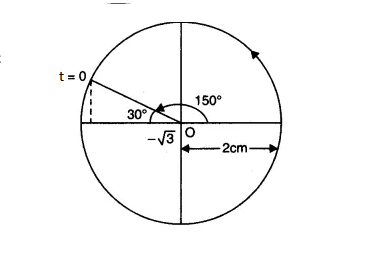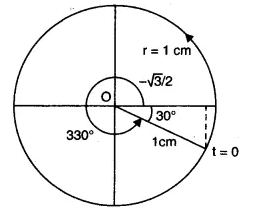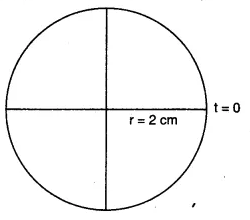Aakash Repeater Courses
ApplyTake Aakash iACST and get instant scholarship on coaching programs.
NCERT Solutions for Class 11 Physics Chapter 13 Oscillations is a crucial Chapter of class 11 in the NCERT syllabus. Oscillation is one of the fundamental category of motion in physics. It is widely applied in various areas such as pendulums, springs, sound waves, AC circuits, and quantum mechanics. Careers360 provides detailed solutions to this chapter on this page. They have been created by experts in accordance with the latest NCERT syllabus 2025-26. Students can download a PDF of these NCERT Solutions as well as view them online.
New: JEE Main/NEET 2027 - Physics Important Formulas for Class 10
JEE Main Scholarship Test Kit (Class 11): Narayana | Physics Wallah | Aakash | Unacademy
NEET Scholarship Test Kit (Class 11): Narayana | Physics Wallah | Aakash | ALLEN
.jpg)
This chapter of the NCERT Solution for class 11 also provides extra questions from past NCERT textbooks that lets you test your knowledge of the chapter. For those preparing for competitive exams, the article contains Higher Order Thinking Skills Questions, whic encourage reasoning and qualitative thinking. Through these problems, the students gain a robust concept of wave motion, mechanical vibrations, and oscillatory systems. All of these topics are crucial for CBSE exams, JEE Main, and NEET.
Also Read,
Searching for a simple and free solution to crack your Class 11 Physics exams? You can download the Chapter 13 NCERT Solutions as a PDF. It is full of step-by-step answers to help you master Oscillations and makes complex material easy and simple to understand. Ideal for last-minute revisions and to shine in your exam.
Q. 13.1 Which of the following examples represent periodic motion?
(a) A swimmer completing one (return) trip from one bank of a river to the other and back.
(b) A freely suspended bar magnet displaced from its N-S direction and released.
(c) A hydrogen molecule rotating about its centre of mass.
(d) An arrow released from a bow
Answer:
(a) The motion is not periodic, though it is to and fro.
(b) The motion is periodic.
(c) The motion is periodic.
(d) The motion is not periodic.
Q. 13.2 Which of the following examples represent (nearly) simple harmonic motion and which represent periodic but not simple harmonic motion?
(a) The rotation of the Earth about its axis.
(b) Motion of an oscillating mercury column in a U-tube.
(c) The motion of a ball bearing inside a smooth curved bowl when released from a point slightly above the lowermost point.
(d) General vibrations of a polyatomic molecule about its equilibrium position.
Answer:
(a) Periodic but not S.H.M.
(b) S.H.M.
(c) S.H.M.
(d) Periodic but not S.H.M [A polyatomic molecule has a number of natural frequencies, so its vibration is a superposition of SHM’s of a number of different frequencies. This is periodic but not SHM.
Q. 13.3 Fig. 13.18 depicts four x-t plots for linear motion of a particle. Which of the plots represent periodic motion? What is the period of motion (in case of periodic motion)?

Fig 13.18
Answer:
The x-t plots for linear motion of a particle in Fig. 13.18 (b) and (d) represent periodic motion, with both having a period of motion of two seconds.
Q. 13.4 (a) Which of the following functions of time represent
(a) simple harmonic, (b) periodic but not simple harmonic, and (c) non-periodic motion? Give a period for each case of periodic motion (
(a)
Answer:
Since the above function is of form
(b)
Answer:
The two functions individually represent SHM but their superposition does not give rise to SHM the motion will definitely be periodic with a period of
(c)
Answer:
The function represents SHM with a period of
(d)
Answer:
Here, each individual function is SHM. But superposition is not SHM. The function represents periodic motion but not SHM.
(e)
Answer:
The given function is exponential and, therefore, does not represent periodic motion.
(f)
Answer:
The given function does not represent periodic motion.
(a) at the end A,
Answer:
Velocity is zero. Force and acceleration are in the positive direction.
(b) at the end
Answer:
Velocity is zero. Acceleration and force are negative.
(c) at the mid-point of AB going towards
Answer:
Velocity is negative, that is, towards A, and its magnitude is maximum. Acceleration and force are zero.
(d) at
Answer:
The velocity is negative. Acceleration and force are also negative.
(e) at
Answer:
Velocity is positive. Acceleration and force are also positive.
(f) at
Answer:
Velocity, acceleration and force all are negative
(a)
(b)
(c)
(d)
Answer:
Only the relation given in (c) represents simple harmonic motion as the acceleration is proportional in magnitude to the displacement from the midpoint, and its direction is opposite to that of the displacement from the mean position.
If the initial
Answer:
at t = 0
at t = 0
Squaring and adding equation (i) and (ii), we get
Dividing equation (ii) by (i) we get
at t = 0
at t = 0
Squaring and adding equation (iii) and (iv), we get
Dividing equation (iii) by (iv), we get
Answer:
Spring constant of the spring is given by
The time period of a spring attached to a body of mass
Fig 13.19
Determine
(i) the frequency of oscillations,
Answer:
The frequency of oscillation of an object of mass m attached to a spring of spring constant k is given by
Fig 13.19
Determine
(ii) maximum acceleration of the mass, and
Answer:
A body executing S.H.M experiences maximum acceleration at the extreme points
Fig 13.19
Determine
(iii) the maximum speed of the mass.
Answer:
Maximum speed occurs at the mean position and is given by
(a) at the mean position,
In what way do these functions for SHM differ from each other, in frequency, in amplitude or the initial phase?
Answer:
Amplitude is A = 0.02 m
Time period is
(a) At t = 0 the mass is at mean position i.e. at t = 0, x = 0
Here x is in metres and t is in seconds.
(b) at the maximum stretched position,
In what way do these functions for SHM differ from each other, in frequency, in amplitude or the initial phase?
Answer:
Amplitude is A = 0.02 m
Time period is
Here x is in metres and t is in seconds.
(c) at the maximum compressed position.
In what way do these functions for SHM differ from each other, in frequency, in amplitude or the initial phase?
Answer:
Amplitude is A = 0.02 m
Time period is
Here x is in metres and t is in seconds.
The above functions differ only in the initial phase and not in amplitude or frequency.

Fig 13.20
Obtain the corresponding simple harmonic motions of the x-projection of the radius vector of the revolving particle P, in each case.
Answer:
(a) Let the required function be
Amplitude
Since initial position
As the sense of revolution is clockwise
Here x is in metres and t is in seconds.
(b) Let the required function be
Amplitude
Since initial position
As the sense of revolution is anti-clockwise
Here x is in metres and t is in seconds.
(a)
Answer:
The initial position of the particle is
The radius of the circle i.e. the amplitude is 2 cm
The angular speed of the rotating particle is
Initial phase is
The reference circle for the given simple Harmonic motion is

(b)
Answer:
The initial position of the particle is x(0)
The radius of the circle i.e. the amplitude is 1 cm
The angular speed of the rotating particle is
Initial phase is
The reference circle for the given simple Harmonic motion is

(c)
Answer:
At t= 0
The reference circle is as follows

(d)
Answer:
The initial position of the particle is x(0)
The radius of the circle i.e. the amplitude is 2 cm
The angular speed of the rotating particle is
Initial phase is
The reference circle for the given simple Harmonic motion is

(b) is stretched by the same force F.

Fig 13.21
(a) What is the maximum extension of the spring in the two cases?
Answer:
(a) Let us assume the maximum extension produced in the spring is x.
At maximum extension
(b) Let us assume the maximum extension produced in the spring is x. That is x/2 due to force towards left and x/2 due to force towards right
Answer:
Amplitude of SHM = 0.5 m
angular frequency is
If the equation of SHM is given by
The velocity would be given by
The maximum speed is therefore
Answer:
The time period of a simple pendulum of length l executing S.H.M is given by
The time period of the pendulum on the surface of Earth is
The time period of the pendulum on the surface of the moon is
Answer:
Acceleration due to gravity = g (in downward direction)
Centripetal acceleration due to the circular movement of the car = a c
Effective acceleration is
The time period is T'
Show that the cork oscillates up and down simply harmonically with a period
Answer:
Let the cork be displaced by a small distance x in downward direction from its equilibrium position where it is floating.
The extra volume of fluid displaced by the cork is Ax
Taking the downwards direction as positive, we have
Answer:
Let the height of each mercury column be h.
The total length of mercury in both columns = 2h.
Let the cross-sectional area of the mercury column be A.
Let the density of mercury be
When either of the mercury columns dips by a distance x, the total difference between the two columns becomes 2x.
The weight of this difference is
This weight drives the rest of the entire column to the original mean position.
Let the acceleration of the column be a. Since the force is restoring
The time period of the oscillation would be

Fig 1
Answer:
Let the initial volume and pressure of the chamber be V and P.
Let the ball be pressed by a distance x.
This will change the volume by an amount ax.
Let the change in pressure be
Let the Bulk's modulus of air be K.
This pressure variation would try to restore the position of the ball.
Since force is restoring in nature, displacement and acceleration due to the force would be in different directions.
The above is the equation of a body executing S.H.M.
The time period of the oscillation would be
(a) the spring constant
Answer:
Mass of automobile (m) = 3000 kg
There are a total of four springs.
Compression in each spring, x = 15 cm = 0.15 m
Let the spring constant of each spring be k
(b) the damping constant b for the spring and shock absorber system of one wheel, assuming that each wheel supports
Answer:
The amplitude of oscillation decreases by 50 % in one oscillation i.e. in one time period.
For damping factor b we have
Answer:
Let the equation of oscillation be given by
Velocity would be given as
Kinetic energy at an instant is given by
Time Period is given by
The Average Kinetic Energy would be given as follows
The potential energy at an instant T is given by
The Average Potential Energy would be given by
We can see K av = U av
Answer:
Moment of Inertia of the disc about the axis passing through its centre and perpendicular to it is
The period of Torsional oscillations would be
(a)
Answer:
At displacement x acceleration is
At displacement x velocity is
(a)At displacement 5 cm
(b)
Answer:
At displacement x acceleration is
At displacement x velocity is
(a)At displacement 3 cm
(c)
Answer:
At displacement x acceleration is
At displacement x velocity is
(a)At displacement 0 cm
Answer:
At the maximum extension of spring, the entire energy of the system would be stored as the potential energy of the spring.
Let the amplitude be A
The angular frequency of a spring-mass system is always equal to
Therefore
Q1. A particle executes simple harmonic motion with a time period 2 seconds and amplitude 1 cm. If D and d are the total distance and displacement covered by the particle in 12.5 s, then
Answer:
Now, 0.5 sec = T/4
Number of complete cycles in 12.5 sec = 12.5 / 2 = 6.25 cycles.
Distance covered in one cycle = 4A = 4cm
Hence, the answer is 25.
Q2. With a period of 5s, a particle moves in simple harmonic motion. The particle takes 1/a time to cover a displacement from the mean location equal to half of its amplitude. To the closest integer, the value of "a" is:
Answer:
Time period, T=5sec
Time taken by the particle,
So,
Hence, the answer is 6.
13.1 Introduction
13.2 Periodic And Oscillatory Motions
13.3 Simple harmonic motion
13.4 Simple harmonic motion and uniform circular motion
13.5 Velocity and acceleration in simple harmonic motion
13.6 Force law for simple harmonic motion
13.7 Energy In Simple Harmonic Motion
13.8 The simple pendulum
To prepare for competitive exams, students can refer to the table below to know what to study. Using the material provided, you can gain an in-depth knowledge of the topics.
Find the NCERT solution for other chapters of class 11 physics below.
Find the links to subject-wise NCERT Solutions below.
From the NCERT chapter oscillations, two questions can be expected for NEET exam. For more questions solve NEET previous year papers.
Yes, oscillation is important for JEE Main. One or two question can be expected from oscillations for JEE Main. It is one of the important chapter for scholarship exams like KVPY and NSEP. To solve more problems on Oscillations refer to NCERT book, NCERT exemplar and JEE main previous year papers.
Chapter 13 of NCERT Physics solutions covers the topic of Simple Harmonic Motion. This includes different formulas and graphs of the motion, and the various ways to understand it using energy and circular motion.
To prepare effectively, students must understand what Simple Harmonic Motion is and understand its various terms, such as- amplitude, time period and phase. It is required to practice the formulas and different types of numericals.
Phase is a quantity that describes the state of an SHM at any instant of time. Phase shift denotes the starting position in an SHM. It is the position of the body at t = 0.

Take Aakash iACST and get instant scholarship on coaching programs.

This ebook serves as a valuable study guide for NEET 2025 exam.

This e-book offers NEET PYQ and serves as an indispensable NEET study material.

As per latest syllabus. Physics formulas, equations, & laws of class 11 & 12th chapters

As per latest syllabus. Chemistry formulas, equations, & laws of class 11 & 12th chapters
As per latest 2024 syllabus. Study 40% syllabus and score upto 100% marks in JEE